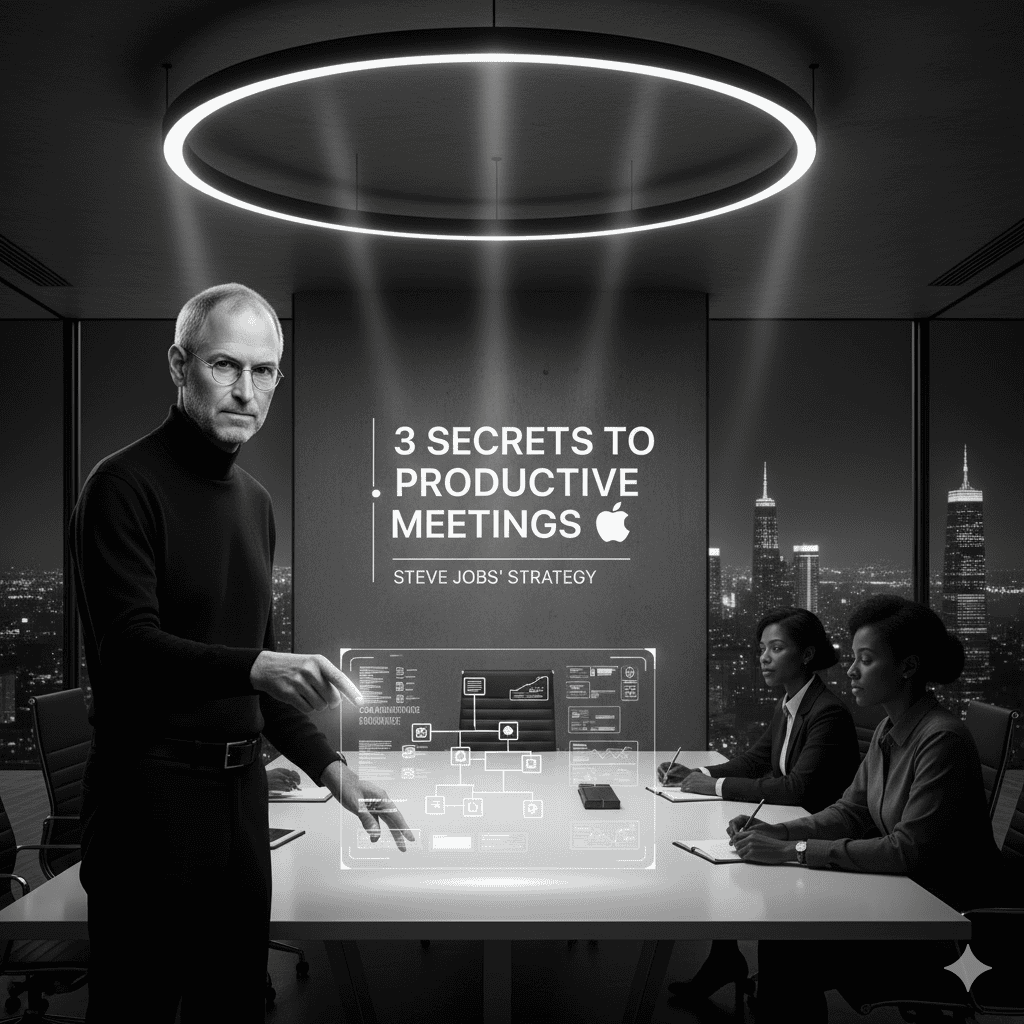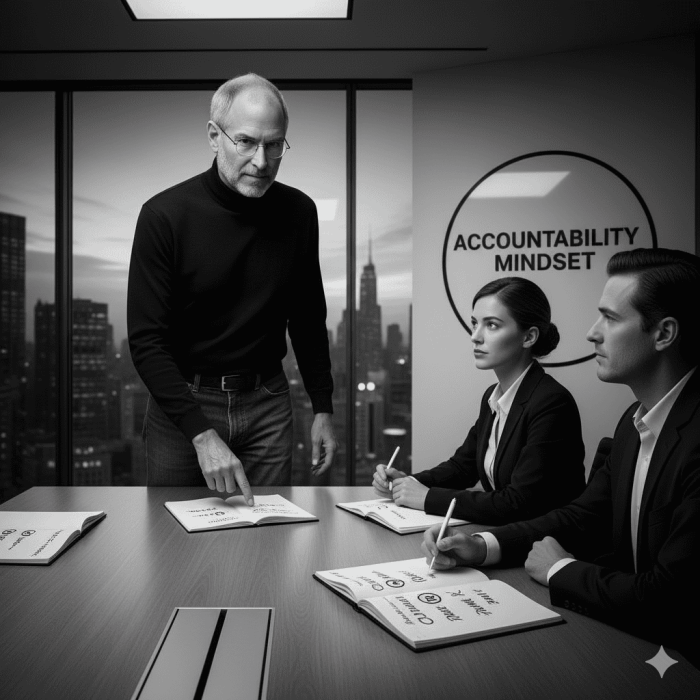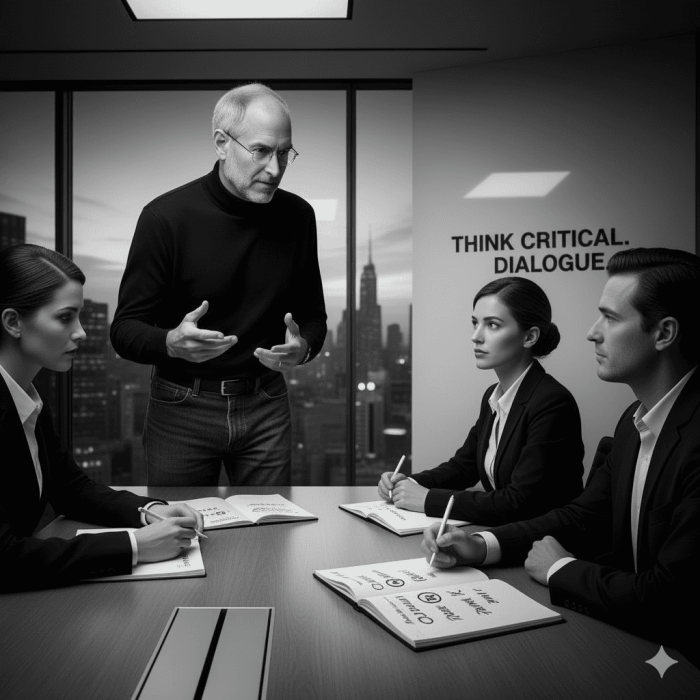
"Don't let your office meetings become mere Time Killers—activities that consume time with no real outcome. Learn three ingenious strategies from the late Apple CEO who transformed meetings into productivity engines."

Photo source by SR Digital - Alinear Indonesia (Gemini AI by Google)

Photo source by SR Digital - Alinear Indonesia (Gemini AI by Google)

Photo source by SR Digital - Alinear Indonesia (Gemini AI by Google)
















